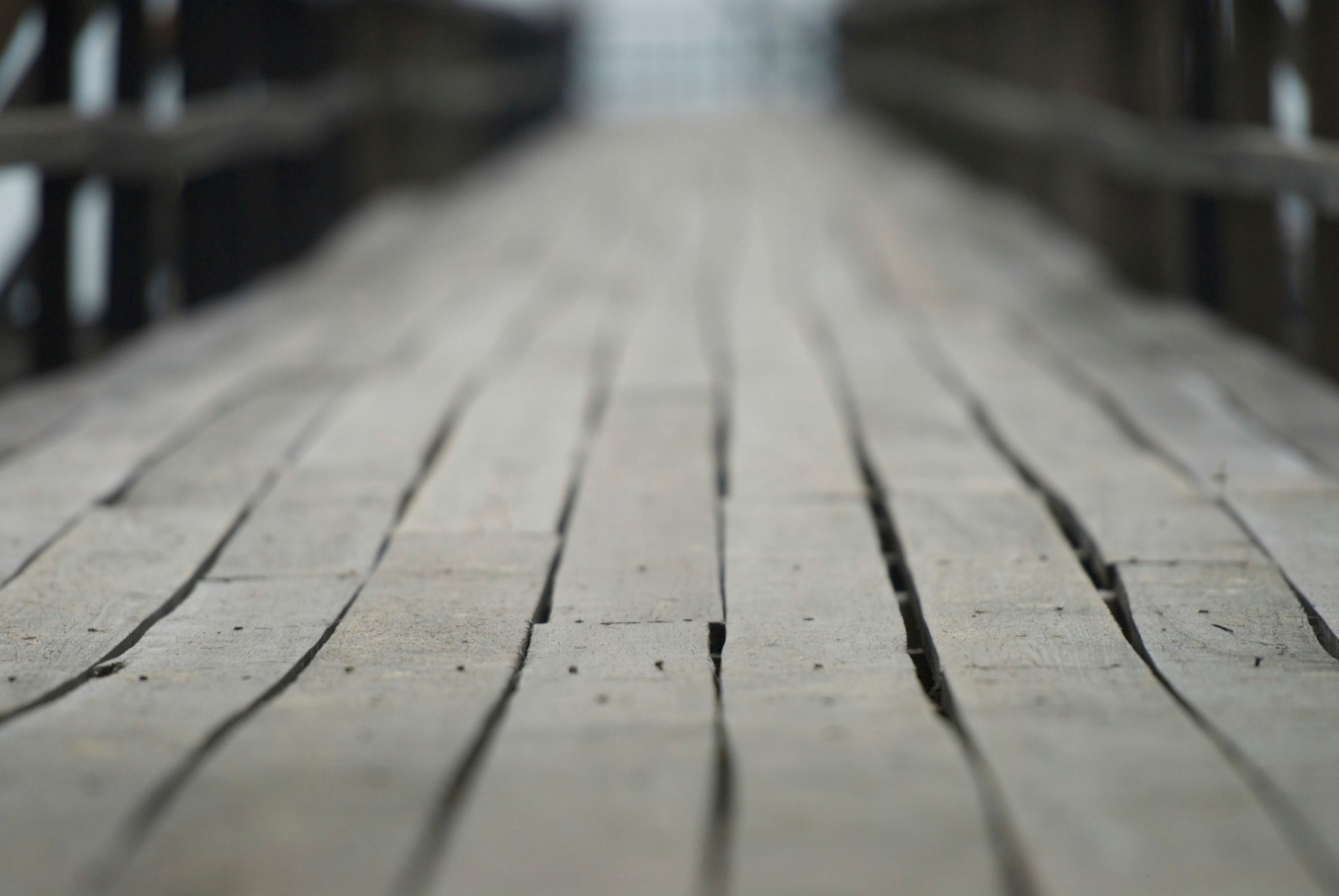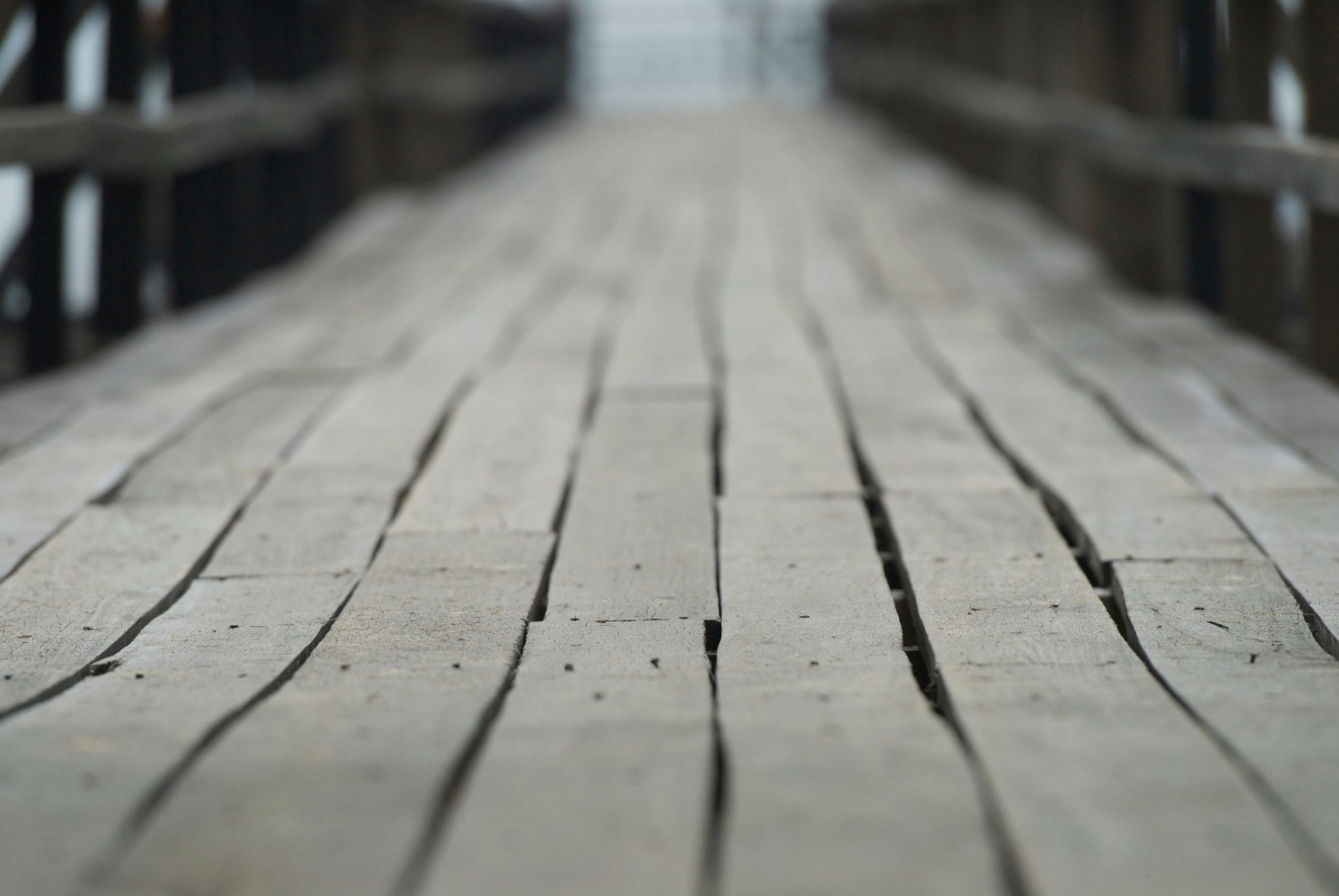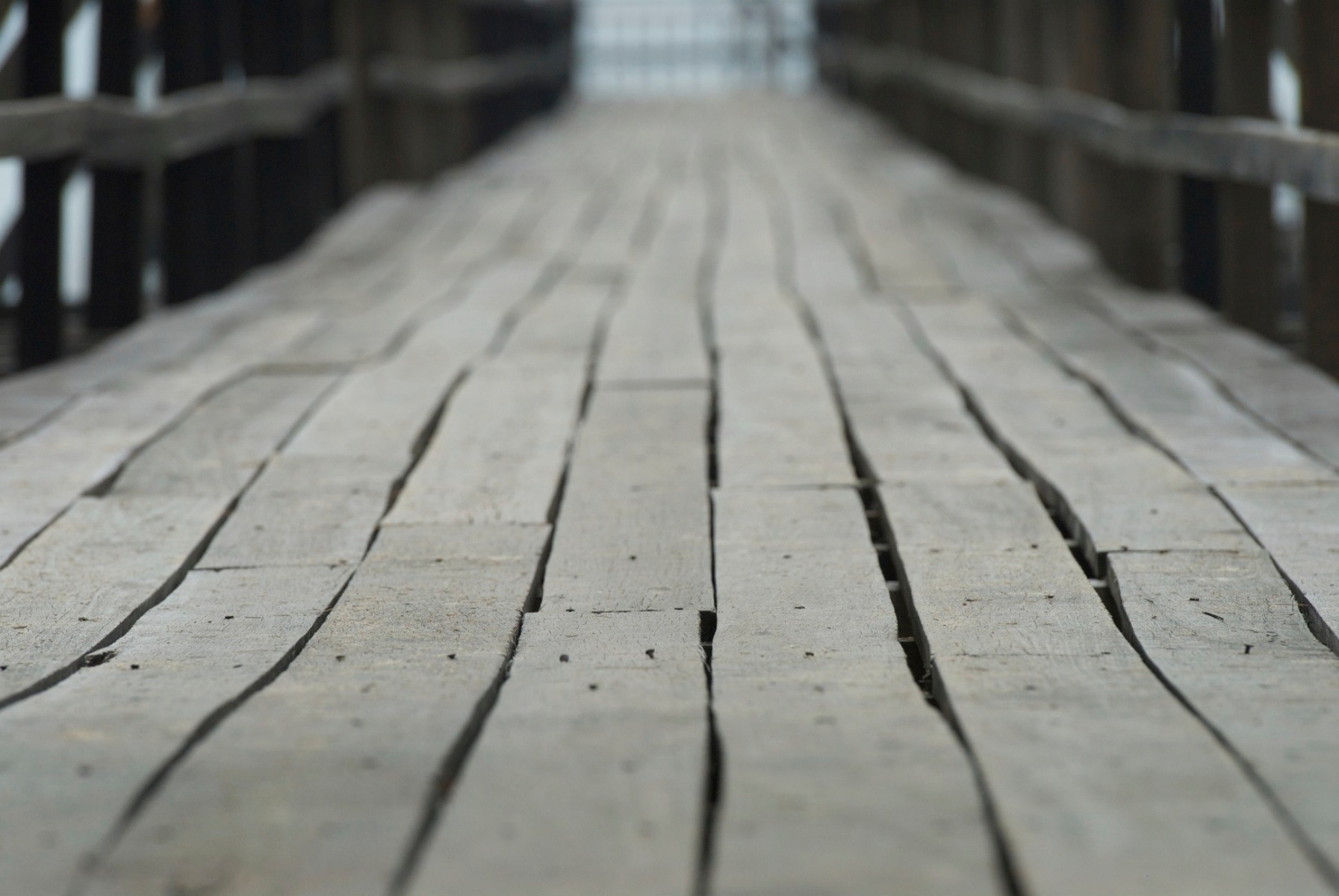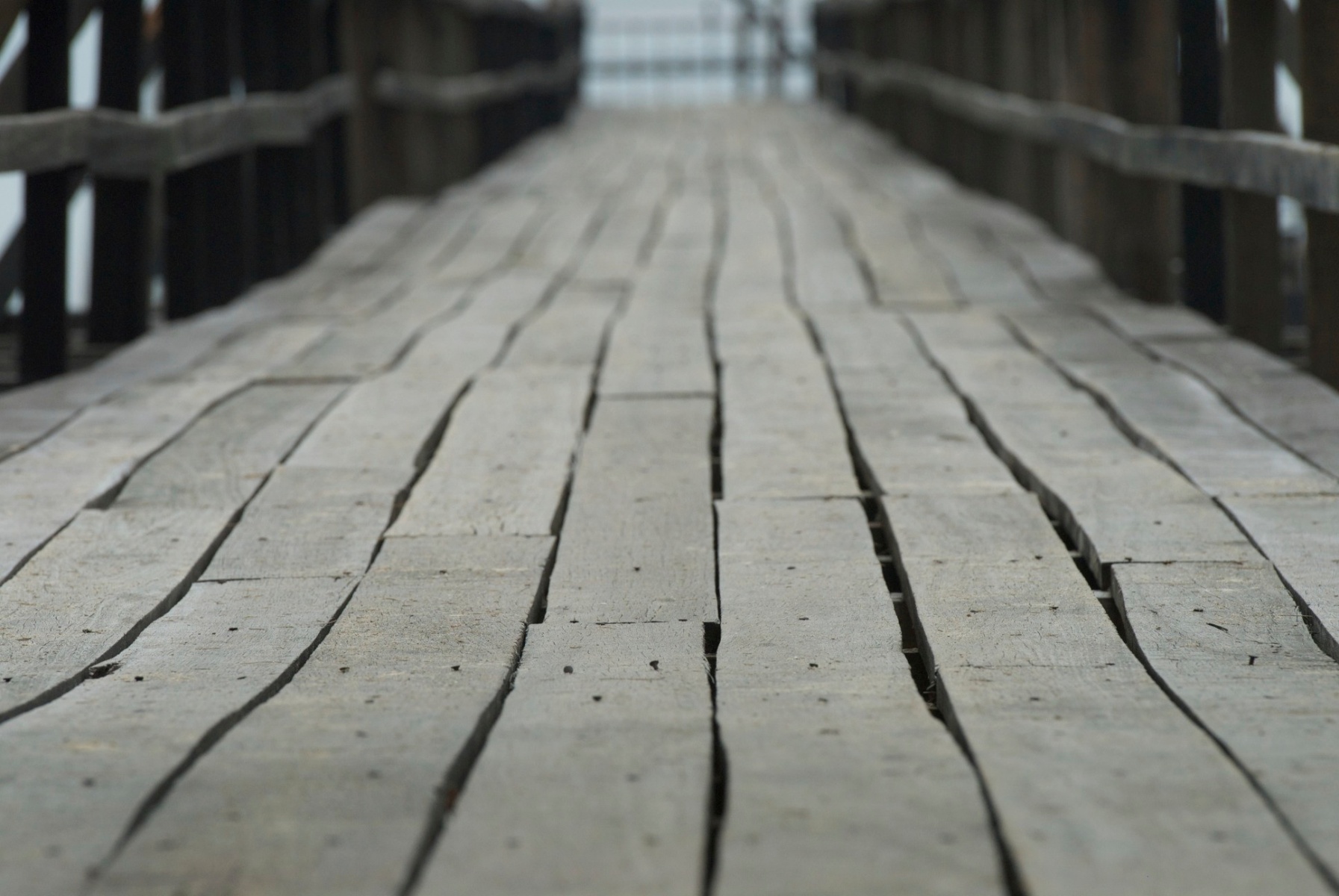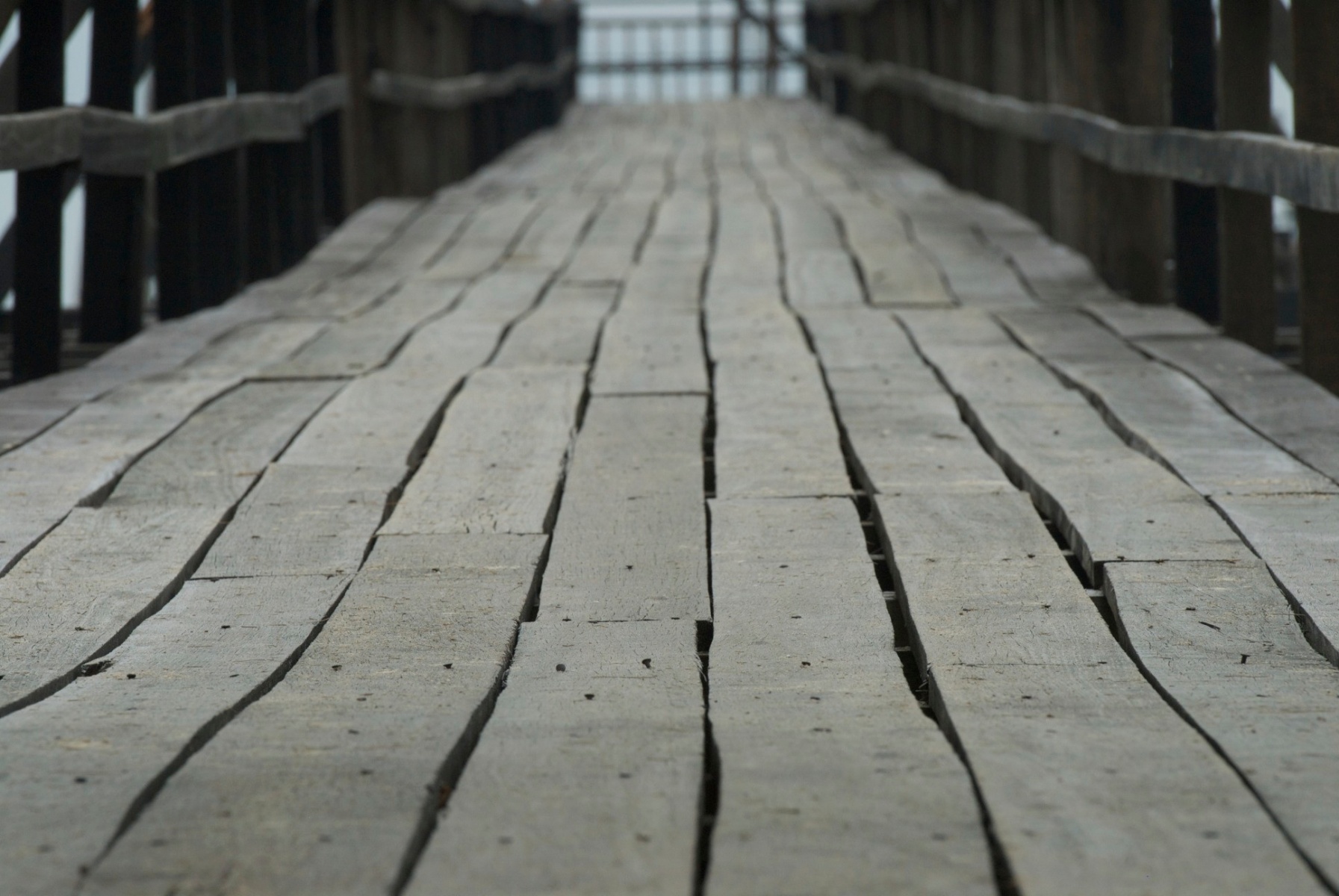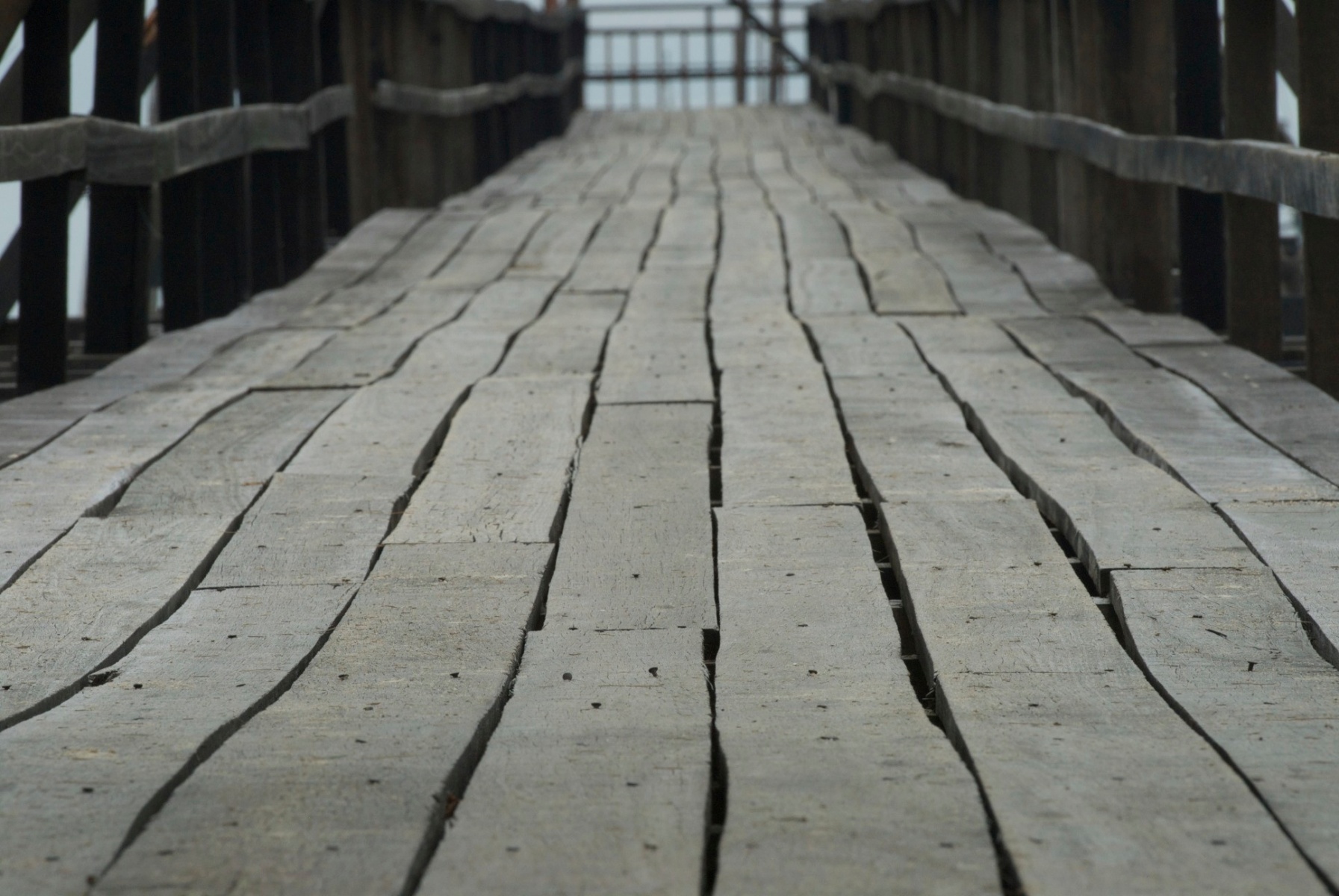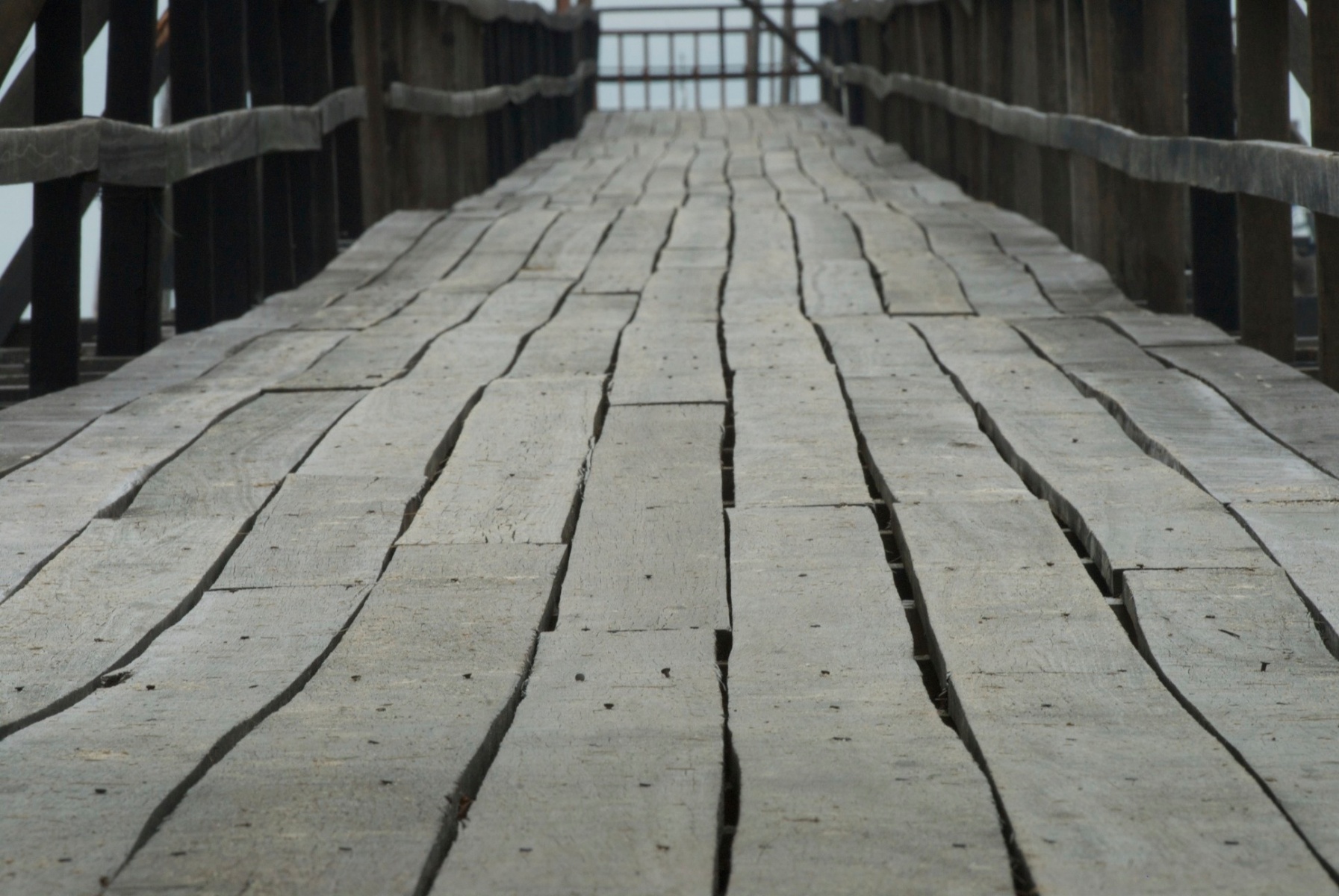We have seen that the aperture controls the amount of light that comes into your camera and therefore your shutter speed. So why wouldn’t we just keep our aperture on our camera set at the widest aperture so the most amount of light will give us the fastest shutter speed? There are a couple of very good answers to that question.

First, the size of the aperture also affects the depth of field in a photograph.
Depth of field is the amount of the image that is in focus, from the foreground to infinity in the background.
The images of the wooden dock should help you to see how aperture affects the depth of field of an image.
I want to point out a few things with this series of images of a wooden dock taken with various apertures. First of all, I focused on the same point in each image. The most obvious change between the images is from very little depth of field at the wide aperture (F2.8) to the maximum depth of field at a small aperture (F22).
As we have looked at how aperture affects shutter speed, you should also remember that each step from F2.8 to F22 cuts in half the amount of light that enters the camera. So with each progressive step in pictures the shutter speed gets doubled. Our shutter speeds ranged from an extremely fast 1/5000 of a second to a manageable 1/80 of a second. Take another look at the F22 image. What do you notice about the sharpness of the background? Even at F22, I couldn’t get the background in focus. Just because you select your smallest aperture (in this case F22), it doesn’t mean the whole image, back to front will be in focus.
There are a few factors that are involved in your ability to get an image which is sharp from front to back when using your smallest aperture (F22 on most lenses). The first factor is the focal length of your lens and the second is where you are focusing in the scene.
So if you want to capture an image with your subject in focus and a blurry background, what aperture would you use? Hopefully, with the examples we have been looking at so far, you would have guessed a wide aperture like F2.8 or F4.
On the other hand, if you want an image that has a foreground subject in focus and the background also in focus, you will need to select a small aperture (remember: large number like F22). This will result in a slower shutter speed than when using a larger aperture.
So what if my shutter speed is too slow?
By now you have changed your camera into aperture priority mode and know how to change your aperture. When you change the aperture, the camera selects what it thinks is the correct shutter speed for that situation.
But sometimes we select an aperture and the camera gives us a shutter speed and when we take the picture, it is blurry. This is because our shutter speed is too slow for us to hold the camera in our hands without shaking or because the subject was moving too fast for our selected shutter speed.
The shutter speed that is generally accepted as the speed at which we can hand hold the camera and get a sharp image is 1/60 of a second. This is just a guideline and not always true. It is possible to get sharp shots hand holding your camera at shutter speeds slower than 1/60 and it is possible to get blurry pictures at shutter speeds faster than 1/60 of a second. However, this is a good starting point. For longer lenses, a good rule of thumb for sharp images is to use a shutter speed that is 1 over the focal length of your lens. A shutter speed of 1/200 of a second should give sharp results with a 200mm lens and a shutter speed of 1/400 of a second for a 400mm lens.
So what can you do if the shutter speed the camera has chosen is too slow and producing blurry pictures?
- The first thing you can do is change your aperture to a larger f-stop to allow more light into your camera. A larger opening means more light which means a faster shutter speed.
- What if you have already selected your widest aperture? You could put your camera on a tripod and take the picture. However, if you have a moving subject, they may still be blurry.
- You could increase your ISO. The ISO is the sensitivity of your camera’s sensor to light. [A film camera’s ISO is determined by the speed of film that you put in the back of the camera. The most common speeds were 100, 200 and 400. Sometimes someone might buy 800 speed film but the results were often not good as you could see film grain in the photo. Being able to change ISO from shot to shot is one of a digital camera’s greatest advantages over film. We will look at ISO in part 3 of the aperture and shutter speed series of posts.
Workshop: Aperture and depth of field
Focus on something close and use a wide aperture (like F4) to capture the image and then shoot the same thing (without moving your position or what you are focusing on) at various apertures (all the way up to F22) to compare the results. Also, try to use different focal lengths because longer focal lengths will naturally give you more blur in the background and are more difficult (even impossible) to get depth of field throughout the image. Experiment with the lenses or different focal lengths.
It will be easier to see the difference if you use a telephoto lens and focus on something close to you.
What you need:
A camera and lens (a telephoto lens will work best)
Remember:
Vary your aperture when capturing images of the same thing and see how this affects depth of field.
Try using different focal lengths.
